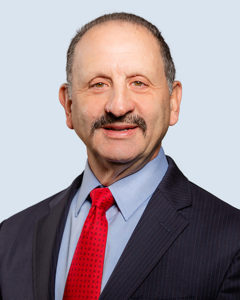
Each year, the Belmont Citizens Forum asks Select Board candidates questions about issues facing our town. This year, Mark Paolillo, who is running unopposed, provided answers. He was limited to 1,200 words.
Describe your vision for preserving and enhancing Belmont’s quality of living, learning, working, and connecting.
Preserving and enhancing Belmont’s quality of life must begin with making town finances stable and sustainable. This will require a more in-depth approach to long-term structural reform. Belmont should consider the use of performance management budgeting which measures resource input against the resulting output of services for each department. That will help us measure the rate of return Belmont gets on its investments. Additionally, a serious 5- to 10-year financial plan must be developed.
These steps will allow us to maintain the level of town services on which our residents depend, invest in our aging infrastructure including roads and sidewalks, and increase our investment in our Level One School District. It should even be possible to develop a plan to build a new library and skating rink that will be utilized and enjoyed by Belmont residents for generations.
What steps would you take to ensure that the design and construction of the community path proceed efficiently?
After decades of work, the Community Path Project Committee (CPPC) and Nitsch Engineering produced the Conceptual Design Report for Phase 1a and Phase 1b of the community path; the Massachusetts Department of Transportation (MassDOT) reviewed and approved it. Belmont will soon submit a 25% design plan to MassDOT. MassDOT final approval will allow the 75% and 100% design phases to proceed.
Proactive work with all stakeholders is needed so Phases 1a and 1b of the community path project can be approved and funded with the hope that construction will begin within the next two to three years.
What are your top categories of concern related to climate change, and what steps should the town take to address those risks?
Climate change is an existential crisis facing the planet, country, state, and our town. A Belmont Energy Committee (BEC) 2018 report provided a roadmap for strategic decarbonization for Belmont that includes an aggressive strategy to reduce greenhouse gas emissions by 80% by 2050, starting from 2007 levels. Work is needed to make sure Belmont can achieve Climate Action Plan goals. I intend to work with BEC to provide residents with information about the Climate Action Plan and to develop significant changes so this can happen.
How would you support efforts for restoration and maintenance of town open spaces and parks, especially given their increased popularity and use in 2020?
Belmont has a population of around 26,000 people inhabiting approximately 4.7 square miles. It has limited open space including parks and playgrounds. Creating a comprehensive catalog of all Belmont’s open space should be the first step in designing a long-term plan for its use. We must then ensure that open space is not developed and that the available open space is restored and maintained. Operating budget or Community Preservation Act funds can be used for this.
How would you guide the town toward improvements in stormwater management, improvements for sewers and drains, and meeting future compliance set forth by state and federal regulatory agencies?
Federal and state regulators have found that Belmont’s discharges into receiving waters do not improve their quality. Therefore, Belmont is required to correct the leaks in some 77 miles of sewer pipe and associated sewer laterals plus an unknown number of illicit connections that put home sewer water into the town’s stormwater drains. The remedial program already developed and put into place by Glenn Clancy, Community Development director, would benefit from more aggressive funding.
The remedial plan begins with water-quality sampling to identify sanitary sewers lacking structural integrity and dye testing to identify problems with sewer laterals or illicit connections. Correction requires relining sewers and laterals with cure-in-place technology that has a 100-year lifetime.
Do you think that a tax rate override, to pay for the things Belmont needs, would be approved by voters considering the recent increases in property tax bills? Why or why not?
Financial Task Force I, which I chaired, recommended a $4.5 million override in April 2015 to address a substantial operating budget structural deficit. The successful override lasted for six years.
Belmont is faced with significant structural deficits for fiscal year 2022 and beyond. As a member of Financial Task Force II, I worked on financial modeling and budget deliberations which have led to the conclusion that a $6.4 million-dollar override vote is needed to address these structural deficits. The additional tax revenue from this override will dramatically increase investment in our schools, provide additional support for our seniors, and address the significant backlog of capital repairs and replacements.
I strongly support this override, even as I understand that its timing is not ideal. Some Belmont residents are struggling financially due to the pandemic, and many seniors are on fixed incomes. Additional measures are needed to support them. Nevertheless, funding is needed to prevent dramatic, long-lasting cuts to both town and school services.
Belmont is faced with significant structural deficits for fiscal year 2022 and beyond.
What changes to transportation infrastructure would help Belmont move better and more efficiently?
A 2019 town-wide traffic study confirmed that:
- regional congestion contributes to cut-through traffic in Belmont;
- adjacent towns cause a high percentage of cut-through traffic;
- peak traffic flow is commuter based; and
- many neighborhoods near congested main roads experience high cut-through traffic volumes.
- Increasing traffic volumes adversely impacts the quality of life for our residents, but improvement is challenging and complex.
The Transportation Advisory Committee working with the Office of Community Development, established a Traffic Calming Policy adopted by the Select Board in 2020. This policy provides the framework through which Belmont’s traffic problems can be addressed. In addition, a long-term plan resulting in the implementation of traffic-calming methods throughout Belmont that is also aligned with neighborhood concerns and safe routes for our school children is needed.
Do you see any emerging benefits or “silver linings” for Belmont resulting from the challenges of 2020?
2020 will long be remembered as a most difficult and challenging year. The pandemic resulted in the tragic loss of hundreds of thousands of lives and untold suffering and pain for many more. We have seen civil unrest and political turmoil. We have witnessed the sacrifices of frontline health care workers, first responders, teachers, educators, and many other citizens have made to provide service to those that were most impacted by the scourge of this pandemic.
I have seen this level of sacrifice and service in our town, in the work of the Health Department, the Council on Aging, other town departments, schools, nonprofit organizations, and many Belmont citizens. If there is a “silver lining” for Belmont, it is the knowledge that when the citizens of our town, state, and country are desperate for help, there will be an outpouring of service and commitment to help them. It gives me hope that better days are ahead!



Sorry, the comment form is closed at this time.